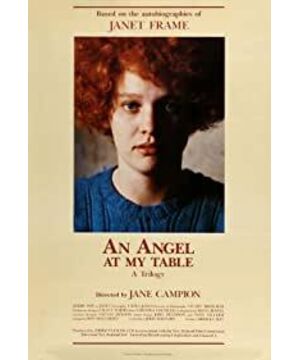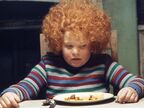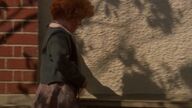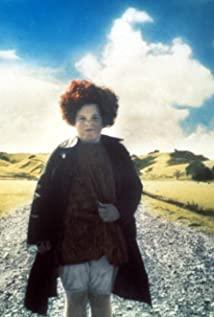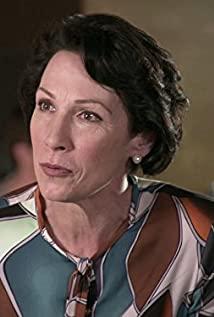The film tells about various events experienced by female writer Janet in three periods of life, and the film structure is divided into three parts. The film is carefully and beautifully shot, with a slow rhythm, which delicately reflects the inner world of the characters, accurately reproduces the original appearance of the female writer Janet's autobiographical novels, and reflects her ill-fated first half of life.
The psychological description in the film is delicate and flavorful. When Janet was in middle school, her sister Mary asked her to go swimming one day, but she refused out of shyness. The sisters danced happily as they walked out the door, while Janet quietly peered out of the window watching them bathed in the sunshine and melody of youth. This contrast delicately shows that Janet desperately desires to have the same happy life as ordinary people, but she often suppresses herself because of her shyness. Similar passages can be seen everywhere in the film, all showing the sensitive and vulnerable heart of a female writer. in the next paragraph. Sister Mary was hit and killed by a car when she was out swimming. Janet spread the bright red dress her sister had just put on the bed and flattened the pleats. The cheerful ditty in the sunlight rang, Janet fell on the red dress. On the skirt, Janet's extreme pain when facing the death of her relatives is implicitly shown.
In college, Janet came to a crossroads in her life. The poor family made her have to give up the greatest dream of her life to become a teacher, but there are thousands of losses in her heart. This mood was expressed when her teacher came to her while she was setting up the classroom. She was overwhelmed with the chalk box, and she shrank her whole body in a hurry, deeply wanting to bury herself in the cabinet. She is a teacher, but deep down, she doesn't want to think of herself as a teacher at all. This kind of psychology is expressed delicately but heartily through this detail.
At the end of the film, Janet walks towards her dream step by step, but there are still many ups and downs in the future. In the night outside the battered RV, the birds sang, and they came to Janet's ears and became a beautiful poem. At the end, through Janet's love for poetry in her painful life, it is shown that this fragile and almost crazy girl has been chasing her dream with the strongest perseverance.
Campion's films focus on the uneven beauty of sight and sound. This is also reflected in "Angel". For example, in the scene before Janet was about to go abroad, the film made a flash-cut scene. It was Janet's childhood. A large area of seascape filled the whole picture, bright and undulating like a dream. Janet and her friends were just a few dots on the beach, and their fanciful singing overshadowed the roar of the entire ocean. This wildly uneven composition and acoustics reinforces Janet's dream of going abroad in a modernist style, both spatially and temporally. The unbalanced composition is also manifested in the railroad tracks that cover the entire picture, or the desolate and beautiful scenery of New Zealand over a large area. In terms of sound, when Janet cried when her sister died, she used the joyful music when she was still alive, but it was more depressing and depressing than the sad background music.
Janet's life experiences in childhood, adolescence, and youth, respectively, let three actors perform Janet in these three periods, but it does not make people feel abrupt. The choice of actors is naturally important, but more important is the montage the director uses as the three periods change.
The tone of Janet's teenage years was suffering, she was shy, sensitive, and vulnerable. She is surrounded by the vastness of nature and the filth and desolation of the world, and she grows up day by day in such an environment. How to accomplish this transition? When the grown-up Janet (who changed the actor) walked into our field of vision, there was dazzling but no warm sunlight, and countless train tracks crisscrossed without direction, a big scene overlooking. Janet walked along the tracks while reading. The voiceover states that Janet is going to study abroad. The choice of the scene is ingenious, so it has a huge artistic connotation and aesthetic shock. Janet has grown up and said goodbye to her former life to go on the road alone, but she is holding a collection of poetry in her hand as she did when she was a teenager. This recurring montage indicates that the person on the screen is Janet. So is this path the right one? The disorderly staggered railroad tracks seem to indicate that the road ahead is not smooth. However, she took to the road with a collection of poems that symbolized her dream, showing that she had not lost her way. This scene completed Janet's transition from childhood to adulthood by leaps and bounds, not only in time and space, but also in life and psychology. The information of the future of life is initially revealed through a metaphorical montage of scenes.
As the psychological montage at the end of the second part shows, the ocean of life rushes in and Janet can respond with the sweetest singing. Not because of her strength, but because of poetry, the angel at her table, has been leading her to a rough future.
View more about An Angel at My Table reviews


